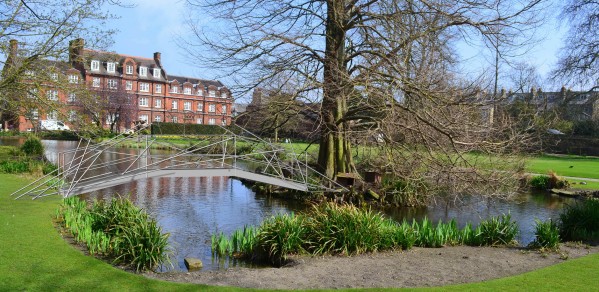
Cam Millar, who graduated from the MEng course in 2020, has won the 2020 Hangai Prize of the International Association of Shell and Spatial Structures for a paper about structural stability. The paper describes the results of Cam’s fourth year project, conducted under the supervision of Allan McRobie and Bill Baker.
It was quite a feat for Cam to win this prize for an undergraduate project. It is traditionally won by young researchers who submit the results of their PhD or post-doctoral studies.
Professor Allan McRobie
The Hangai Prize is open to applicants under the age of thirty, and is traditionally won by young researchers who submit the results of their PhD or post-doctoral studies. For Cam to win this prize on the basis of an undergraduate project is a remarkable achievement.
Cam’s research on structural stability is a major extension to the traditional method of graphic statics, enabling it to be used to describe the stability of structures. It builds upon the work of a long line of famous Cambridge names, from Simon Guest, Sergio Pellegrino and Chris Calladine all the way back to Edward Routh and James Clerk Maxwell. Since graduating, Cam has been working with Bill Baker, of Skidmore Owings and Merrill (SOM) in Chicago, developing further methods for the design of materially-efficient structures.
Cam summarises his paper "A graphical method for determining truss stability" below:
With the modern climate crisis, material efficiency within structures is very important. As such, sometimes structural members which do not carry any load in an equilibrium analysis are removed. However, this can have adverse effects on the stability of the structure. Imagine a bowl with a ball in it; the ball is in equilibrium and if the ball is disturbed slightly it returns to the middle of the bowl – this is stable. If the bowl was upturned, the ball is still in equilibrium as it can sit on top of the bowl without a problem. However, if the ball is nudged then it will roll off the bowl – this is unstable. Stability tends to be more subtle than equilibrium. This research project investigated new graphical methods for determining the stability of structures, such as tensegrities. The aim of this is to allow the designer to intuitively see why a structure is stable or unstable and therefore adjust their design accordingly.

Cam with the steel part of the Emmanuel College May Ball bridge under construction.

